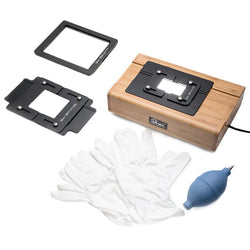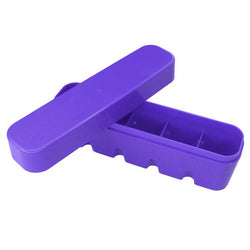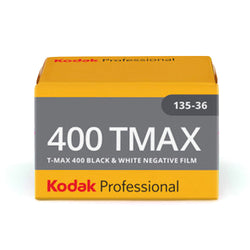Features
-
Great entry point to digital camera scanning 35mm & 120 medium format film
High-quality film holders and light source included
Advancer allows fast and easy film transport
Hoods allow users to scan in any environment
Product Details
“Valoi” is a Finnish word meaning light and creation — a nod to the creativity of analog photography. The Scandinavian roots of VALOI are visible in the minimalist and functional design. VALOI 360 is a film holder system that provides an affordable way to digitize your rolls of 35mm and 120 medium format film using a digital camera, without compromising on features. This system will help you scan film quicker and, with the right setup, with higher quality than traditional flatbed scanners.
The VALOI 360 Large Bundle includes just about everything you need to get started camera scanning 35mm and 120 medium format film with the VALOI 360 system and CineStill CS-LITE light source.
Includes:
![]()
The VALOI Advancer significantly upgrades your at-home film scanning experience. Paired with the VALOI film holders, it allows you to
scan quicker and more precisely with precision film-advancing knobs rather than manually pushing/pulling the film through the holders.
The sturdy steel construction features four rubberized and threaded feet for ensuring the film holders are perfectly level. Additionally, the Advancer raises your film off of the light source for more even illumination.
While best used with uncut rolls of film, it can also be used with cut strips as short as 3 frames.
![]()
The CineStill CS-LITE slides into the VALOI 360 Light Adapter and is secured with a set screw from the side. The Advancer can then be screwed into the top of the Light Adapter. Four adjustable rubber feet provide a firm grip onto the scanning surface and can be used to level the apparatus for perfectly sharp scans.
![]()
The CS-LITE light is a compact light source specifically designed for scanning 35mm and 120 film with a digital camera. It features a CRI of 95+ for high color accuracy and a brightness of EV 15+ to provide sufficient illumination for even the densest of negatives. The color temperature can be adjusted to properly suit different types of film, such as color negative, color positive, and black and white using the built-in remote control.
![]() The VALOI 360 film holders are the foundation of the 360 system. The double S-curved track keeps the film exceptionally flat for the highest quality scans. The 35mm Film Holder is optimized for full, uncut rolls of standard 35mm film with a frame size of 24x36mm (no sprockets are shown). Cut strips can be used, but flatness may vary.
The VALOI 360 film holders are the foundation of the 360 system. The double S-curved track keeps the film exceptionally flat for the highest quality scans. The 35mm Film Holder is optimized for full, uncut rolls of standard 35mm film with a frame size of 24x36mm (no sprockets are shown). Cut strips can be used, but flatness may vary.
![]()
Like the 35mm Film Holder, the 120 version features a double S-curve that keeps the film flat for high quality scans. It can accomodate frames up to 6x9 in size for single capture scanning. Film Format Masks for 6x4.5, 6x6, and 6x7 are available separately for cutting down on excess spill light.
![]()
The VALOI 360 Scanning Hoods shade the film from external light, allowing users to keep the room lights on for highest quality scans in a more comfortable working environment. The hoods simply slides onto the VALOI film holder from one side. The attachment mechanism ensures that the hood stays on even if you move the holder. Made with FDM 3D printing using a carbon fiber filled plastic and feature a matte, low reflection surface.
Camera Scanning Considerations:
Camera Body
Just about any semi-modern, interchangeable-lens digital camera will work great for camera scanning. There are many mirrorless or DSLR options to choose from with large lens catalogs, tethered capture capability, and excellent image quality. Some high end cameras can even use pixel stitching to deliver extremely high levels of resolution.
Macro Lens
For camera scanning, the one real requirement is that your lens focuses close enough to capture the entire frame. For full frame cameras and capturing 35mm film, the term “1:1” designates a lens that will reproduce the 35mm frame exactly onto the full frame digital sensor. With crop-sensor bodies, 1:1 lenses focus even closer. Outside of reproduction factor (1:1), also look out for lenses that are sharp, have good color reproduction, limit internal reflections (modern coatings), and have very little vignetting. Finally, it’s generally best to use your macro lens stopped down 2-3 stops from wide open, as this gives a good combination of depth of field and sharpness.
Software for Negative Conversion
There are a few plugins and standalone programs for converting captured negatives into positive images. Some older and some newer, all of them try to harness the color science based in darkroom paper to various degrees. After all, even a professional lab scanner is essentially a digital camera and a light source. Most of the options presented here allow you to download a demo version to try before you buy and determine which one best suits your workflow.

























